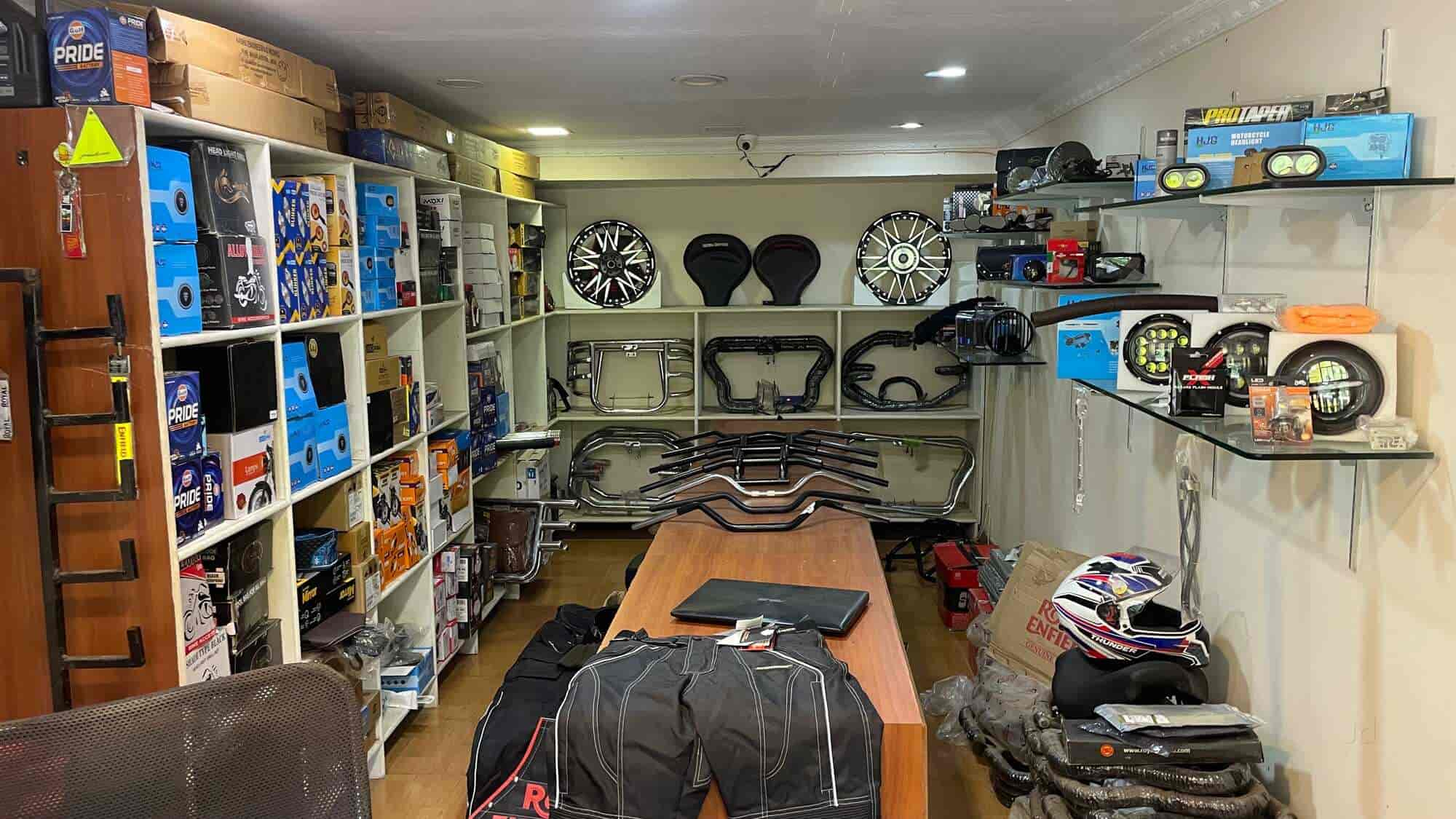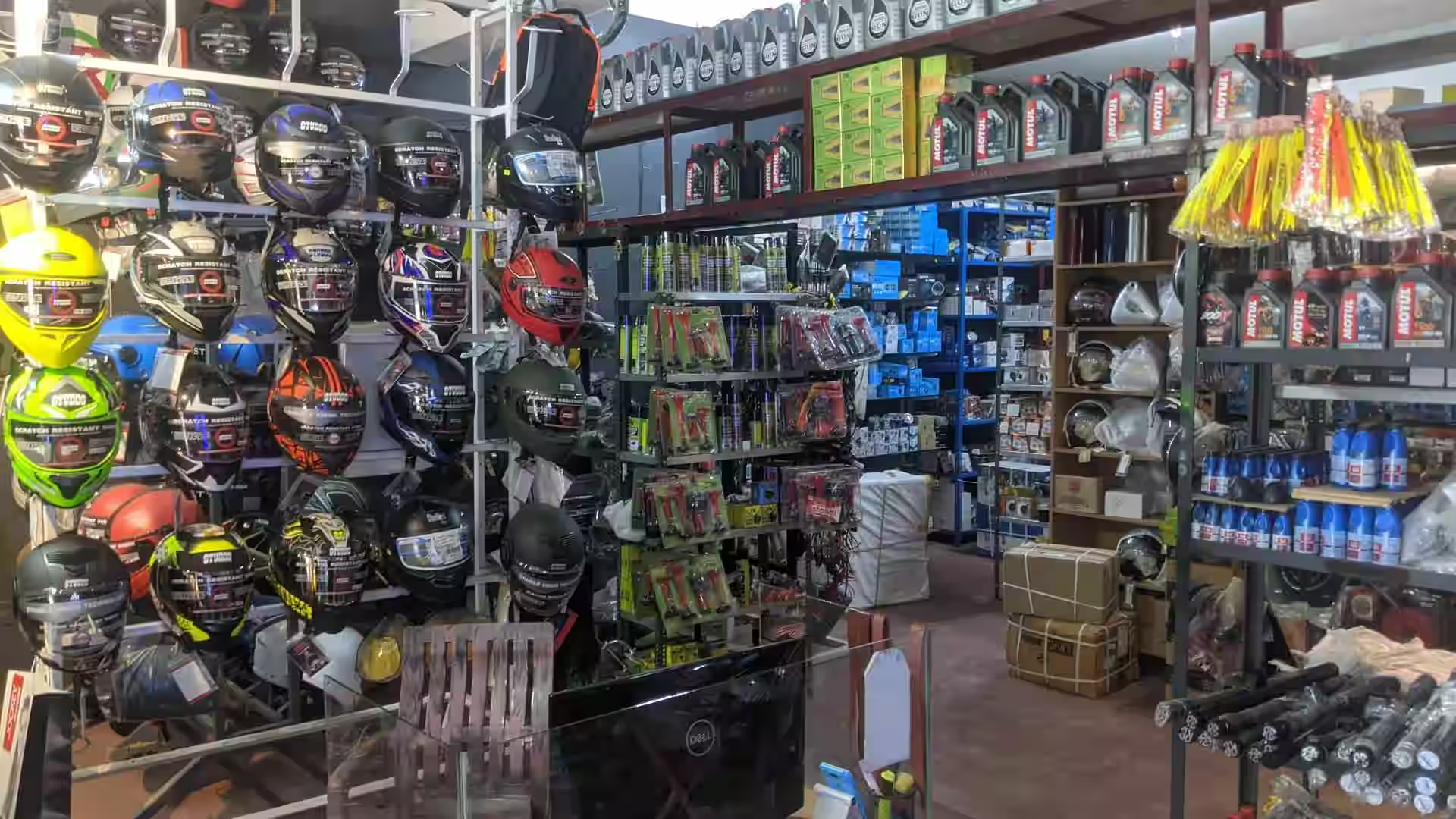Discover Quality Moto Parts NZ for All Your Motorcycle Demands
Discover Quality Moto Parts NZ for All Your Motorcycle Demands
Blog Article
Comprehending the Crucial Parts of a Motorbike: A Comprehensive Guide for Fanatics
For motorcycle lovers looking to elevate their riding experience and ensure their bikes run efficiently, understanding the important elements of a motorcycle is extremely important. Each element, from the engine's elaborate workings to the crucial duty of the stopping mechanisms, not just affects efficiency but also safety and comfort. This overview will go through the essential components that every rider should be familiar with, making it possible for educated options in both maintenance and prospective upgrades. As we begin this exploration, one must ask: just how does each element engage to produce the smooth experience every fanatic looks for?
Engine Parts

The camshaft plays an essential function in regulating the timing of the engine's valves, making sure the exact opening and closing necessary for reliable gas and air intake, along with exhaust expulsion. This timing is essential to preserving ideal engine performance and efficiency. Additionally, the carburetor or gas injection system, depending upon the motorcycle version, is accountable for blending air with fuel in the right proportion for combustion.
The cooling system, either air or liquid-based, functions to preserve the engine's temperature within operational limitations, stopping getting too hot and making sure longevity - motorcycle shop. Each component, carefully made and incorporated, contributes to the seamless procedure of the engine, defining the bike's power outcome and overall performance
Transmission System
Indispensable to the motorcycle's performance, the transmission system guarantees effective power transfer from the engine to the wheels. This system comprises several critical components, including the clutch, transmission, and final drive, each playing an essential function in equating the engine's power into motion. The clutch, commonly run by a hand bar, serves to disengage the engine and involve from the transmission, enabling smooth equipment adjustments and regulated acceleration.
The transmission, typically described as the transmission proper, includes a set of gears that riders can by hand move with to adjust the bike's speed and torque result. These equipments are organized in a sequence that makes it possible for the bike to accelerate smoothly and maintain optimum engine performance throughout different speeds. Most motorbikes make use of a sequential gearbox, calling for the motorcyclist to move equipments in an established order.
Braking Systems
While recognizing the transmission system is crucial to using a bike's power, just as important is the capability to regulate and quit that power successfully, which is where braking mechanisms come right into play. Brakes are crucial for safety and security and efficiency, supplying the motorcyclist with the needed control to browse numerous terrains and conditions. Typically, motorcycles include 2 kinds of braking systems: disc brakes and drum brakes.
Disc brakes are extra prevalent in contemporary motorcycles because of their premium performance. They contain a brake disc, caliper, and pads. When triggered, the caliper presses the brake pads against the rotating disc, transforming kinetic power into warm, thereby reducing the wheel. This system uses far better warmth dissipation, constant efficiency, and improved stopping power, specifically in wet problems.
On the other hand, drum brakes, though less typical, are still discovered in some bikes. They work by pressing brake shoes against the internal surface area of a drum connected to the wheel. While normally much less effective in heat dissipation and quiting power, drum brakes are simpler and much more cost-effective.
Understanding these braking systems' nuances permits riders to preserve their motorcycles correctly and appreciate the engineering that makes certain risk-free and reliable quiting.
Suspension and Steering
Suspension and steering systems are essential parts that dramatically affect a bike's handling and adventure comfort. The shock absorber, consisting of forks at the front and shock absorbers at the back, takes in roadway abnormalities, enhancing security and control. Front forks, usually telescopic or inverted, compress and rebound to alleviate effects, while rear shock absorbers maintain tire contact with the road, crucial for traction and safety and security.
Steering, centered around the handlebars, links the biker to the motorbike's directional control. The guiding head bearings guarantee smooth operation, permitting specific maneuverability. Appropriate alignment and upkeep of these bearings are essential for predictable guiding response and decreasing motorcyclist exhaustion.
The suspension's adjustability is an additional crucial aspect; preload, damping, and rebound settings allow modification to fit numerous riding designs and problems. This flexibility is necessary for maximizing performance, whether browsing metropolitan streets or taking on rugged routes. Innovations like digital suspension systems offer real-time adjustments, improving adventure high quality throughout diverse terrains.

Electric Equipments
After ensuring a smooth and controlled adventure via reliable suspension and guiding systems, attention transforms to the electric systems, a critical element of modern-day motorcycles. These systems play a critical duty not click for source only in starting the engine however likewise in powering various components that enhance the capability and security of the motorcycle.
At the heart of a motorbike's electrical system is the battery, which shops electric energy required for beginning her explanation the engine and powering complementary systems - motorcycle parts nz. The alternator or generator, paired with the rectifier-regulator, makes certain the battery stays billed while the motorbike functions, converting mechanical power right into electrical energy and preserving voltage degrees
The ignition system, an additional essential part, is in charge of sparking the air-fuel mix in the engine's cyndrical tubes. Modern bikes usually make use of a digital ignition system, offering higher effectiveness and integrity contrasted to traditional systems.
Lighting systems, including fronts lights, tail lights, and indications, are likewise important, making certain exposure and safety for the motorcyclist. Additional digital components such as sensors, control devices, and presents add to sophisticated attributes like gas shot management, anti-lock braking systems (ABDOMINAL MUSCLE), and electronic control panels, additionally improving the riding experience.
Final Thought
A comprehensive understanding of a motorbike's vital elements, consisting of the engine, transmission system, stopping devices, suspension, steering, and electrical systems, is indispensable for lovers intending to enhance comfort, safety and security, and performance. Proficiency of these elements enables educated choices concerning maintenance and upgrades, inevitably improving the riding experience. By incorporating this knowledge, cyclists can guarantee their motorbikes run at peak effectiveness and integrity, therefore maximizing both pleasure and durability of their lorries.
For motorcycle fanatics looking to boost their riding experience and guarantee their bikes run smoothly, recognizing the necessary parts of a motorcycle is extremely important.Important to the motorcycle's functionality, the transmission system ensures efficient power transfer from the engine to the wheels.While recognizing the transmission system is crucial to taking advantage of a bike's power, equally essential is the capability to regulate and stop that power effectively, which is where stopping devices come into play. Normally, bikes feature two kinds of stopping systems: disc brakes and drum brakes.
A detailed comprehension of a motorbike's crucial parts, consisting of the engine, transmission system, discount motorcycle clothing stopping systems, suspension, steering, and electric systems, is essential for lovers aiming to enhance safety, performance, and convenience.
Report this page